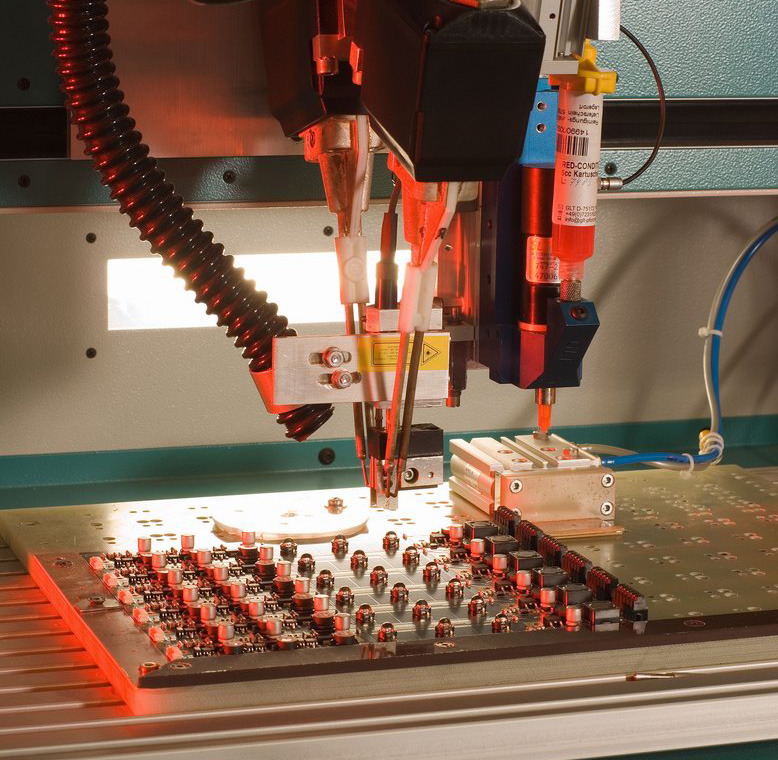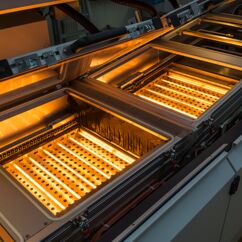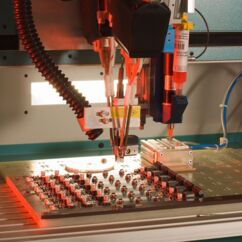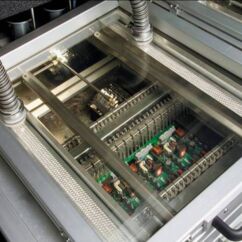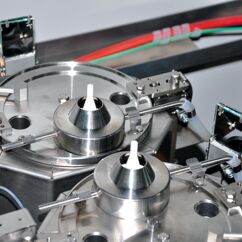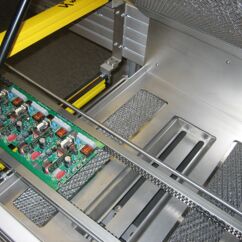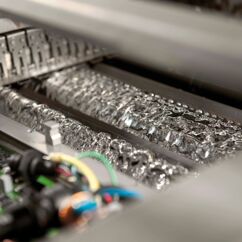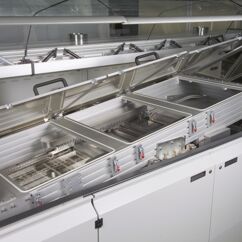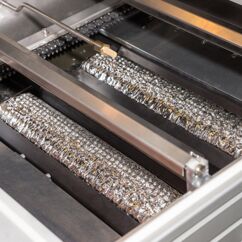Soldering
In electronics production we work with different soldering methods, such as wave soldering, reflow soldering, manual soldering or selective soldering.
In SMD technology (Surface Mounted Devices) we assemble tiny components such as 01005, 0201, QFN, QFP and BGA. Such components are now standard and indispensable for PCB assembly. The circuits realized with SMD are often very compact. Due to the variety of components, high demands are placed on the soldering quality.
The so-called reflow soldering or reflow soldering used in SMT is a common soft soldering process, which is used in particular for soldering SMD components. Printed circuit boards are printed with a solder paste using stencil printing and the individual components are placed on top using the pick-and-place process. The components adhere directly to the sticky paste. Afterwards, the assembled PCB is heated by full convection in a reflow process, so that the solder melts and the SMD components automatically centre and stick down due to the surface tension.
With double-sided SMD-assembled PCBs, the PCBs are printed with adhesive, the components are placed in the adhesive and the adhesive is cured in the reflow oven.
The components are soldered in the wave soldering process together with the THT (Through Hole Technology) components. Wave soldering of SMD components is not always possible for various reasons. Then the SMD components are reflow-soldered on both sides and THT components are selectively soldered.
Areas in which wired components cannot be replaced by SMD components are still attached to the printed circuit board by means of push-through mounting, and are then soldered with a full tunnel wave soldering system or selective soldering system.
With the full tunnel wave soldering system, the THT components are soldered in a nitrogen environment via a soldering wave on the underside of the PCB. The controlled nitrogen environment supports the quality of soldering.
The technological advantage of selective soldering is above all that it is a regulated and very controllable process. The ambient conditions for each solder joint and also the soldering process itself can be programmed and monitored in the selective soldering system. The flux quantity and the soldering time for each individual solder joint can be selectively controlled. This results in higher quality, process reliability and reproducibility of soldering results in series production. Soldering temperature and contact time are set exactly: The solder joint is preheated in the selective soldering system with a nitrogen gas flow. The gas flow surrounds the solder nozzle wetted with solder, while the solder flows off continuously over the upper edge. Depending on the thermal mass of the PCB and the requirements of the respective solder joint, the preheating time is precisely specified and the temperature is kept constant by a measuring system.
An ultrasonic nozzle applies the flux exactly and the solder level is also precisely maintained by automated control. This ensures that the soldering height at the nozzle is always constant.
